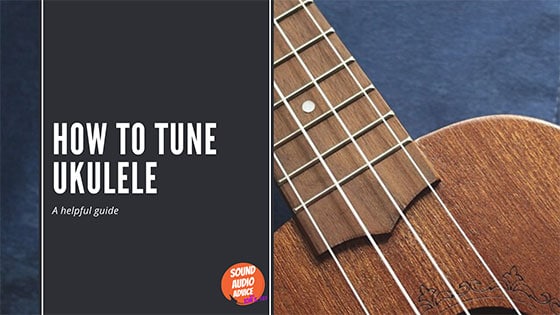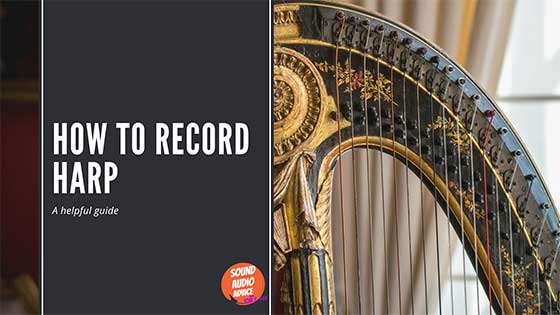How to tune ukulele

Best free apps for learning ukulele
December 31, 2022
What are vocal hops and how to make vocal chops on a DAW
January 12, 2023How to tune ukulele
To tune a ukulele, you will need a reliable reference pitch, such as a tuning app or an electronic tuner. It may take a few tries to get the strings perfectly in tune. Be patient and keep adjusting the tuning pegs until the strings are in tune.
Ukuleles are usually tuned to a standard tuning of G-C-E-A, but there are other alternate tunings that you can try as well.
There are several alternate ukulele tunings that you can try on your ukulele. Here are a few examples:
D tuning (A-D-F#-B): This tuning is often used for playing slide ukulele and for playing in the key of D.
C tuning (G-C-E-G): This tuning is similar to standard tuning, but with a lower G string. It is often used for playing in the key of C.
Low G tuning (G-C-E-G): This tuning is similar to standard tuning, but with a low G string instead of a high G string. It is often used for a fuller, deeper sound.
High D tuning (A-D-F#-B): This tuning is similar to D tuning, but with a higher D string. It is often used for a brighter, more resonant sound.
Slack-key tuning: Slack-key tuning is a traditional Hawaiian method of tuning the ukulele. It involves tuning the strings to open chords, resulting in a unique, resonant sound.
It’s important to note that alternate tunings may require different chord shapes and may not be suitable for all types of music. Experiment with different tunings to find the sound that you prefer, and be prepared to adjust your playing style accordingly.
How to tune ukulele with tuner
To tune a ukulele using an electronic tuner, follow these steps:
First, make sure that the tuner is set to the correct mode for ukulele tuning. Most tuners will have a setting for ukulele, but if yours does not, you can use the guitar tuning mode.
Pluck the G string (the fourth string from the top) and adjust the tuning peg until the tuner indicates that the string is in tune. The tuner will usually display a needle or a digital readout to show whether the pitch is too high or too low.
Repeat this process for the remaining strings: C string (third string from the top), E string (second string from the top), and A string (top string).
Once all of the strings are in tune, it’s a good idea to double-check the tuning by playing a few chords or melodies to make sure that everything sounds in tune. If the tuner indicates that a string is out of tune, adjust the tuning peg until the string is in tune.
Using an electronic tuner can make the process of tuning a ukulele much easier and more accurate, especially for players who are new to the instrument. If you don’t have an electronic tuner, you can also use a smartphone tuning app or a pitch pipe as a reference pitch.
How to tune ukulele without tuner or by ear
It is possible to tune a ukulele without an electronic tuner, but it can be a bit more challenging. Here are a few steps you can follow to tune a ukulele by ear:
Start by finding a reliable reference pitch. This could be a pitch pipe, a tuning app on your smartphone, or even a piano or guitar that is already in tune.
Begin by tuning the G string (the fourth string from the top). Pluck the string and compare the pitch to the reference pitch. If the string is too high, turn the tuning peg to lower the pitch. If the string is too low, turn the peg to raise the pitch.
Next, tune the C string (the third string from the top). Pluck the string and compare the pitch to the reference pitch. Adjust the tuning peg as needed to get the string in tune.
Tune the E string (the second string from the top) using the same process.
Finally, tune the A string (the top string). Pluck the string and compare the pitch to the reference pitch. Adjust the tuning peg as needed to get the string in tune.
It may take a few tries to get the strings perfectly in tune. Be patient and keep adjusting the tuning pegs until the strings are in tune.
Tuning a ukulele by ear can be a good way to develop your ear for music, but it can be more challenging than using an electronic tuner. If you are having trouble, you may want to consider using a tuner or seeking the help of a music teacher or professional musician.
How to tune ukulele to low g
To tune a ukulele to low G, you will need a reliable reference pitch, such as a tuning app or an electronic tuner. The process for tuning a ukulele to low G is similar to the process for standard tuning, but with the G string (the fourth string from the top) tuned to a lower pitch.
Start by tuning the G string to the low G pitch. Pluck the string and adjust the tuning peg until the reference pitch matches the pitch of the string.
Next, tune the C string (the third string from the top). Pluck the string and adjust the tuning peg until the reference pitch matches the pitch of the string.
Tune the E string (the second string from the top). Pluck the string and adjust the tuning peg until the reference pitch matches the pitch of the string.
Finally, tune the A string (the top string). Pluck the string and adjust the tuning peg until the reference pitch matches the pitch of the string.
It may take a few tries to get the strings perfectly in tune. Be patient and keep adjusting the tuning pegs until the strings are in tune.
Low G tuning can give your ukulele a fuller, deeper sound, but it may require some adjustment to your playing style. Some chords and melodies may sound different in low G tuning, so you may need to experiment with different chord shapes and playing techniques.
How to tune ukulele with piano
To tune a ukulele with a piano, you will need to use the piano as a reference pitch. Here are the steps you can follow:
Start by tuning the G string (the fourth string from the top). Pluck the string and adjust the tuning peg until the pitch of the string matches the pitch of the G above middle C on the piano.
Next, tune the C string (the third string from the top). Pluck the string and adjust the tuning peg until the pitch of the string matches the pitch of the C above middle C on the piano.
Tune the E string (the second string from the top). Pluck the string and adjust the tuning peg until the pitch of the string matches the pitch of the E above middle C on the piano.
Finally, tune the A string (the top string). Pluck the string and adjust the tuning peg until the pitch of the string matches the pitch of the A above middle C on the piano.
It may take a few tries to get the strings perfectly in tune. Be patient and keep adjusting the tuning pegs until the strings are in tune.
Using a piano as a reference pitch can be a good way to tune a ukulele, especially if you are new to the instrument. However, it’s important to make sure that the piano is itself in tune, as an out-of-tune piano can lead to incorrect ukulele tuning. If you don’t have access to a piano, you can use a tuning app or an electronic tuner as a reference pitch instead.
How to tune a ukulele soprano
The process for tuning a ukulele soprano is similar to the process for tuning any other type of ukulele. You will need a reliable reference pitch, such as a tuning app or an electronic tuner, and you will need to adjust the tuning pegs until the pitch of each string matches the reference pitch. Here are the steps you can follow:
Start by tuning the G string (the fourth string from the top). Pluck the string and adjust the tuning peg until the reference pitch matches the pitch of the string.
Next, tune the C string (the third string from the top). Pluck the string and adjust the tuning peg until the reference pitch matches the pitch of the string.
Tune the E string (the second string from the top). Pluck the string and adjust the tuning peg until the reference pitch matches the pitch of the string.
Finally, tune the A string (the top string). Pluck the string and adjust the tuning peg until the reference pitch matches the pitch of the string.
It may take a few tries to get the strings perfectly in tune. Be patient and keep adjusting the tuning pegs until the strings are in tune.
Ukuleles are usually tuned to a standard tuning of G-C-E-A, but there are other alternate tunings that you can try as well. You can find more information about alternate ukulele tunings online or by consulting a music teacher or professional musician.
How to tune 6 string ukulele
The process for tuning a 6-string ukulele is similar to the process for tuning a 4-string ukulele, but with two additional strings.
Start by tuning the A string (the top string). Pluck the string and adjust the tuning peg until the reference pitch matches the pitch of the string.
Next, tune the E string (the second string from the top). Pluck the string and adjust the tuning peg until the reference pitch matches the pitch of the string.
Tune the C string (the third string from the top). Pluck the string and adjust the tuning peg until the reference pitch matches the pitch of the string.
Tune the G string (the fourth string from the top). Pluck the string and adjust the tuning peg until the reference pitch matches the pitch of the string.
Tune the B string (the fifth string from the top). Pluck the string and adjust the tuning peg until the reference pitch matches the pitch of the string.
Finally, tune the F# string (the bottom string). Pluck the string and adjust the tuning peg until the reference pitch matches the pitch of the string.
It may take a few tries to get the strings perfectly in tune. Be patient and keep adjusting the tuning pegs until the strings are in tune.
6-string ukuleles are often tuned to a standard tuning of A-E-C-G-B-F#, but there are other alternate tunings that you can try as well. You can find more information about alternate ukulele tunings online or by consulting a music teacher or professional musician.
Hope that satisfies your tunning needs!
Thanks for reading.
Tom
I’m Tom S. Ray and I’m head mastering engineer at Audio Unity Group. I also hold a bachelor with honours degree in music from Kingston University in London, I lecture mastering to students in Edinburgh College and to my online students via my Mastering Mastery audio mastering online course.




